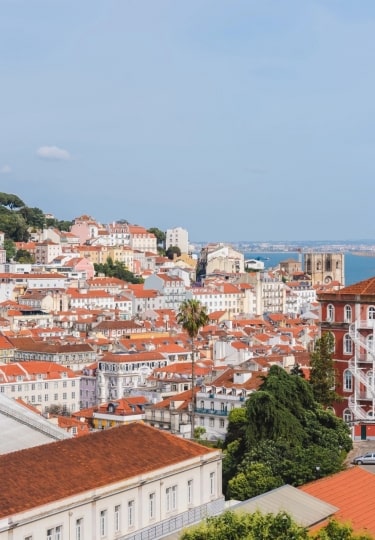Alfama, Lisbon’s oldest neighborhood, cascades down from a castle-crowned hill to the Tagus River like a living time capsule. An entrancing maze of roughly cobbled streets, closet-sized restaurants, and melancholic melodies carried by the Atlantic’s breeze, it’s a district where every corner cries out to be explored.
Founded by the Moors in the 8th century, Alfama is one of Lisbon’s only quarters where you’ll still find medieval structures, having survived an earthquake in 1755 that all but destroyed the city. Even today, the district feels like a timeless village hemmed in by a big city. But it’s not only the buildings that retain a traditional charm.
Laundry still flutters in the breeze below windows, pocket-size street stalls hawk shots of ginjinha, a cherry liquor, and sardines and soulful fado music remain as influential now as a century ago. Here’s how to experience the best of Lisbon’s Alfama district.
Attractions in Alfama, Lisbon
Castelo de São Jorge

Castelo de São Jorge
One of the most beautiful places in Portugal, Castelo de São Jorge crests Lisbon’s highest hill, commanding arguably the best views in the whole city. It’s a formidable fortification; parts of these defenses date back to the 11th century, although the walls were heavily restored in the mid-1900s.
Meandering amongst the medieval stonework and weathered canons before climbing higher still to circle the walkable section of walls, you’ll enjoy postcard-worthy panoramas of Lisbon. You might even meet the castle’s resident peacocks.
Once you’ve oohed and aahed from every tower and viewpoint, don’t miss the small museum. Inside, exhibits discuss the importance of this European castle throughout the ages, including the former fortification believed to have been here in the 6th century.
Sé (Lisbon Cathedral)

Sé
As Lisbon’s oldest church, Sé has played a sizable role in shaping the importance of the Alfama district. And while churches can seem a dime a dozen in Europe, this 12th-century edifice isn’t solely a place of worship.
Once you’ve stepped over the threshold of the twin bell-towered stone entrance, you’ll be greeted by the expected stained glass rose window and medieval nave. Yet plenty more awaits.
With a ticket, you’ll have access to the exterior balcony and treasury museum, where relics of yore, such as religious capes and golden crosses, are displayed. In the cloisters—closed until 2025 for a major renovation—you can witness the ongoing excavations of Lisbon’s Roman and Islamic layers.
Museu Teatro Romano
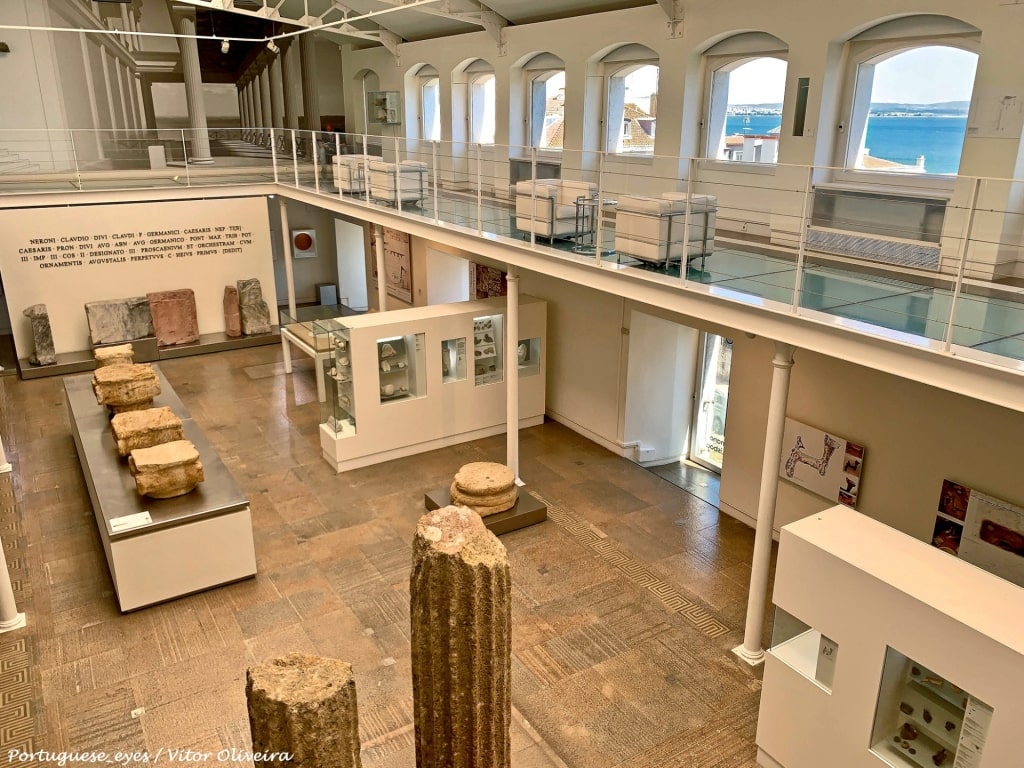
Museu Teatro Romano Photo by Vitor Oliveira on Wikimedia Commons, licensed under CC BY-SA 2.0
More than two millennia ago, Lisbon was ruled by the Roman Empire. Olisipo, as it was known then, was a mighty city of colonnade buildings and hot spring bathhouses.
Sadly, much of this history is buried. Once a year, the city pumps water from the underground Roman Galleries to allow access to visitors. But Alfama’s other excavations are visible year-round.
Almost hidden behind the Museu do Aljube, the Roman Theatre Museum has two parts. First, peek at what remains of the tiered seating in the open-air area before continuing to the museum’s lower levels to inspect the excavations and artifacts more closely.
Museu do Aljube
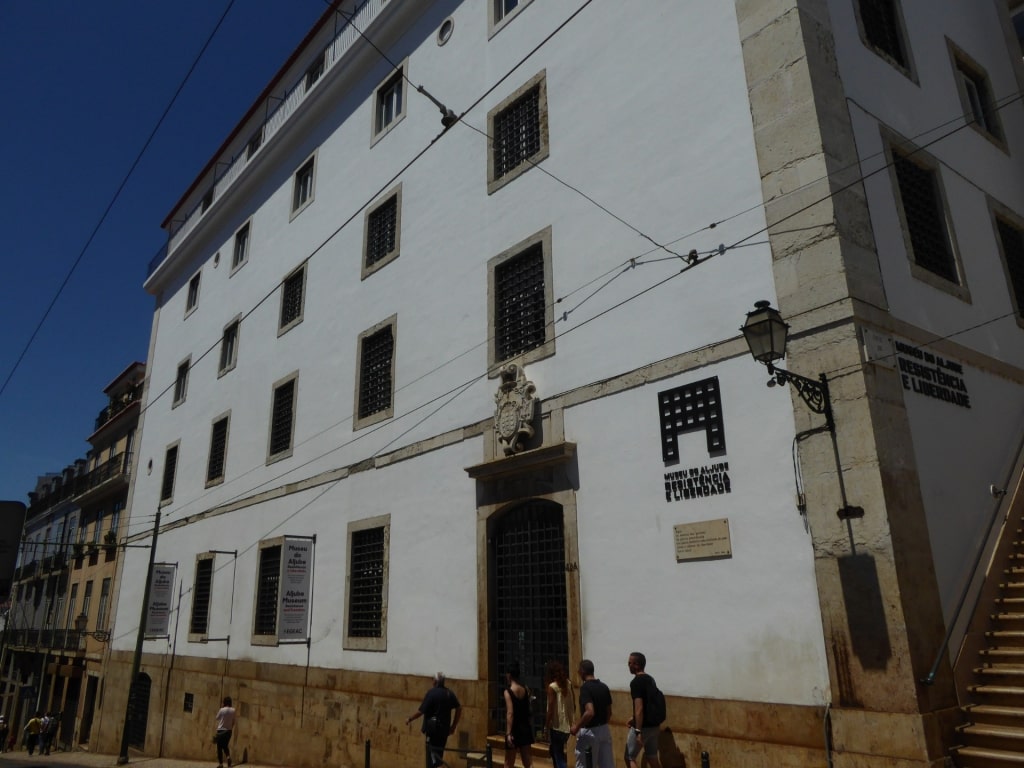
Museu do Aljube Photo by Ardfern on Wikimedia Commons, licensed under CC BY-SA 4.0
Another Roman legacy in the heart of Alfama, Lisbon, is the Ajube Prison. Operated up until 1965 to house political prisoners under Portugal’s dictatorship, the building is now the Resistance and Freedom Museum.
Spread across four floors of this thick-walled structure, the museum’s harrowing topics tell the stories of clandestine freedom movements and those imprisoned in closet-like cells. It also examines Portugal’s colonies.
While some of the personal accounts can be heartbreaking, this museum in Lisbon will leave you with an in-depth insight into what life was like for the Portuguese just half a century ago.
Mosteiro de São Vicente de Fora

Mosteiro de São Vicente de Fora Photo by Alegna13 on Wikimedia Commons, licensed under CC BY-SA 3.0
Technically, the Church and Monastery of São Vicente de Fora are in the adjacent neighborhood of the same name. But they’re only a few steps from the Alfama district—a few steps you should unquestionably take.
Although it’s often overlooked in favor of the more famous Jerónimos Monastery in Belém, some would argue that this vast 16th-century complex is more than just a rival and is actually the city’s best monastery to visit.
Inside the lavishly decorated interior, commissioned by kings of the time, you’ll be regaled with frescoed ceilings, intricately embellished chapels, and serene cloisters clad with blue-and-white tiles. It’s truly one of Lisbon’s most overlooked attractions.
Panteão Nacional

Panteão Nacional
Looming large on the skyline, the National Pantheon’s unmissable dome is São Vicente’s second landmark. Originally constructed as a 16th-century church, the never-quite-finished Baroque building was finally completed in the 1960s, becoming the final resting place for Portugal’s most notable personalities.
Tombs aside, it’s hard not to be awed as you step into the rotunda. The soaring, symmetrical ceilings are quite the sight. But as with most things in Lisbon, the views only get better the higher you climb.
From the elevated galleries, you can fully appreciate the octagonal, polished marble floor patterns before continuing to the rooftop for sweeping views across Alfama.
Things to Do in Alfama, Lisbon
Explore Alfama’s Lower Labyrinth
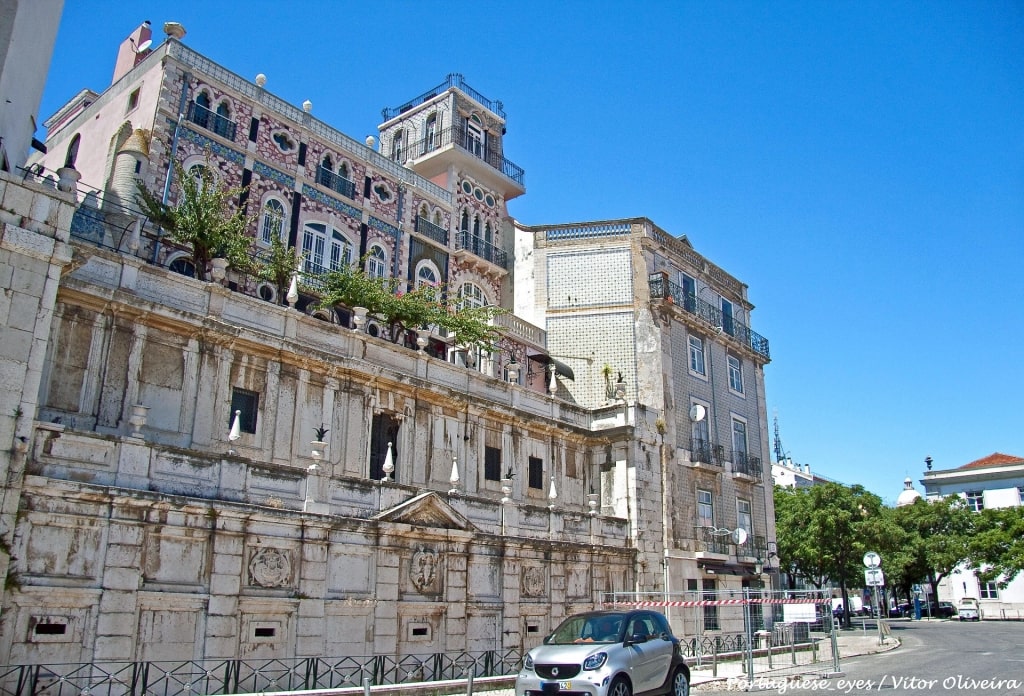
Largo do Chafariz Photo by Vitor Oliveira on Flickr, licensed under CC BY-SA 2.0
Away from the Alfama district’s big hitters, a maze of medieval cobbled streets, slender pastel-hued homes, and undersized squares slope to the river. It’s here that you’ll find the steadfast charm of this quaint neighborhood in Lisbon.
While the more elevated streets around the castle draw the crowds, the lower part of Alfama remains, for the most part, much quieter. There might not be as many viewpoints or monumental buildings, but strolling the web of tapered alleys, known as becos, will allow you to envision the Alfama of old.
Laundry airs below windowsills, residents perch outside their notoriously narrow homes for a little sunshine, and small squares with shaded benches seemingly await around most corners.
Eventually, all streets seem to lead back to central Largo do Chafariz, where you’ll find Chafariz de El-Rei, Lisbon’s oldest fountain, and al-fresco restaurants emitting the aroma of sizzling sardines.
Fall in Love With Fado
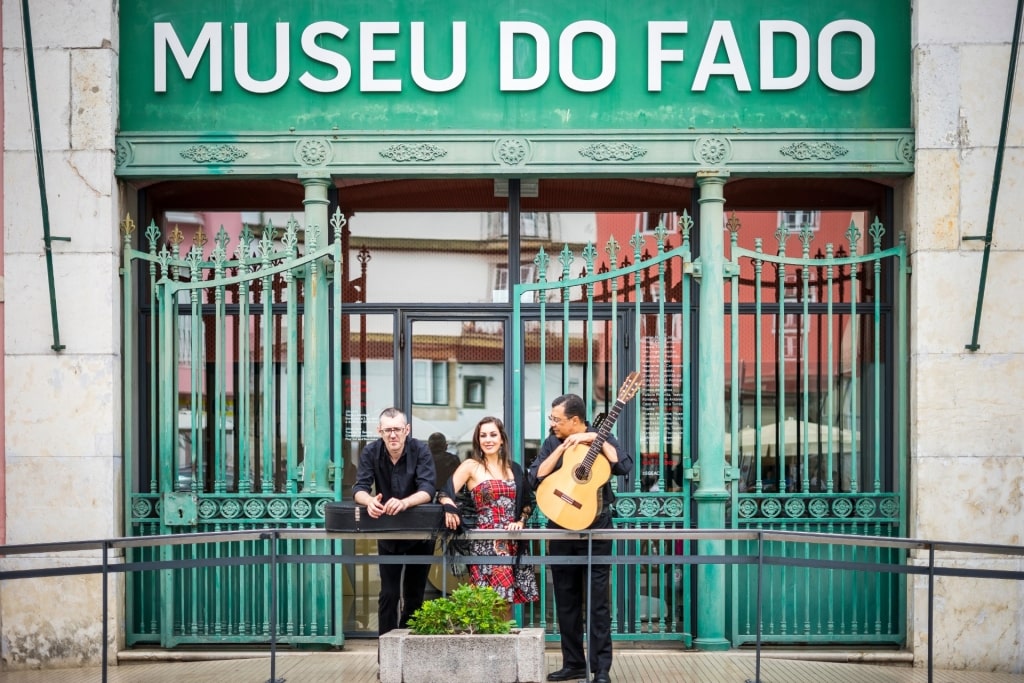
Fado Museum
Soulful and spine-tingling, fado isn’t just Portugal’s most famed music style; it’s a history lesson wrapped up in song. The melancholic musical genre was born in the neighboring district of Mouraria in the 1800s, and its lyrics often spotlight the societal struggles of the day.
Quickly, it spread to Alfama, Lisbon’s poorest community at the time, and until this day, it continues to define these two side-by-side communities. You’ll often hear the haunting echoes of singers or guitarists practicing throughout the day.
Watching a fado concert while in Alfama shouldn’t be missed, either over an upscale dinner in blue-and-white tiled Mesa de Frades or a more low-profile fado house.
Once you’ve been suitably serenaded, visiting Alfama’s Fado Museum is one of the best things to do in Lisbon to learn more about the genre and its most legendary singer, Amália Rodrigues.
Relish Lofty Lisbon’s Lookouts
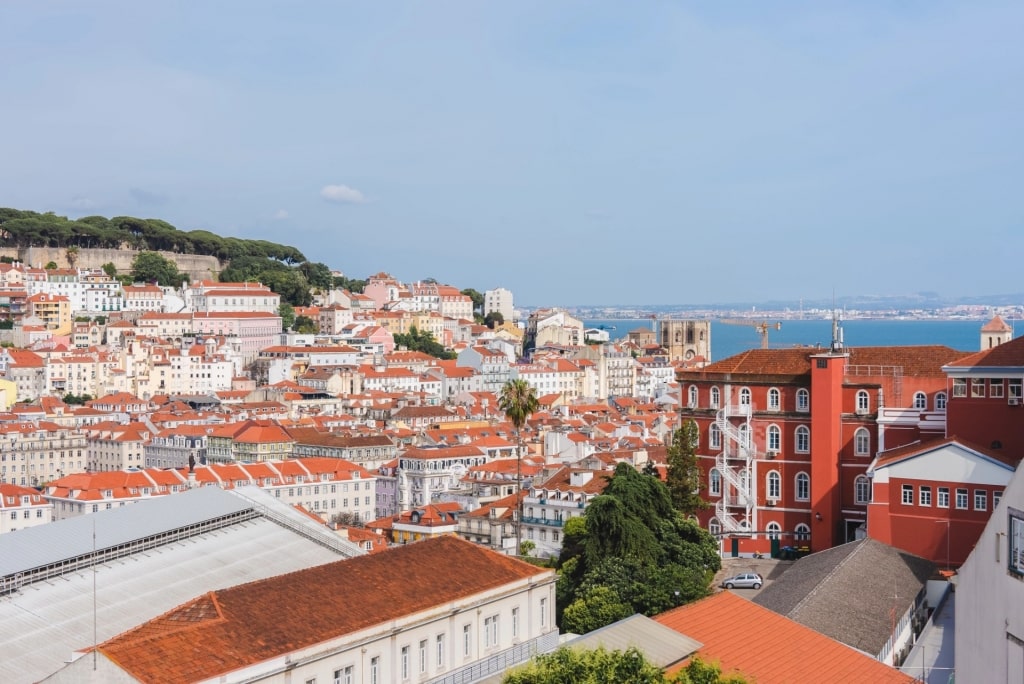
Alfama
Lisbon’s seven hills might sometimes feel grueling, but they nearly invariably conclude with a picturesque award: miradouros. Portugal’s dedicated term for panoramic viewpoints is well-deserved.
The Alfama district is particularly spoiled for far-reaching vantage points overlooking whitewashed streets and terracotta roofs.
Some of the best for taking dreamy photos include Miradouro do Chão do Loureiro, peeking across downtown, and Miradouro de Santa Luzia, where musicians will likely add to the tiled balcony’s charm.
Learn About a Literary Legend
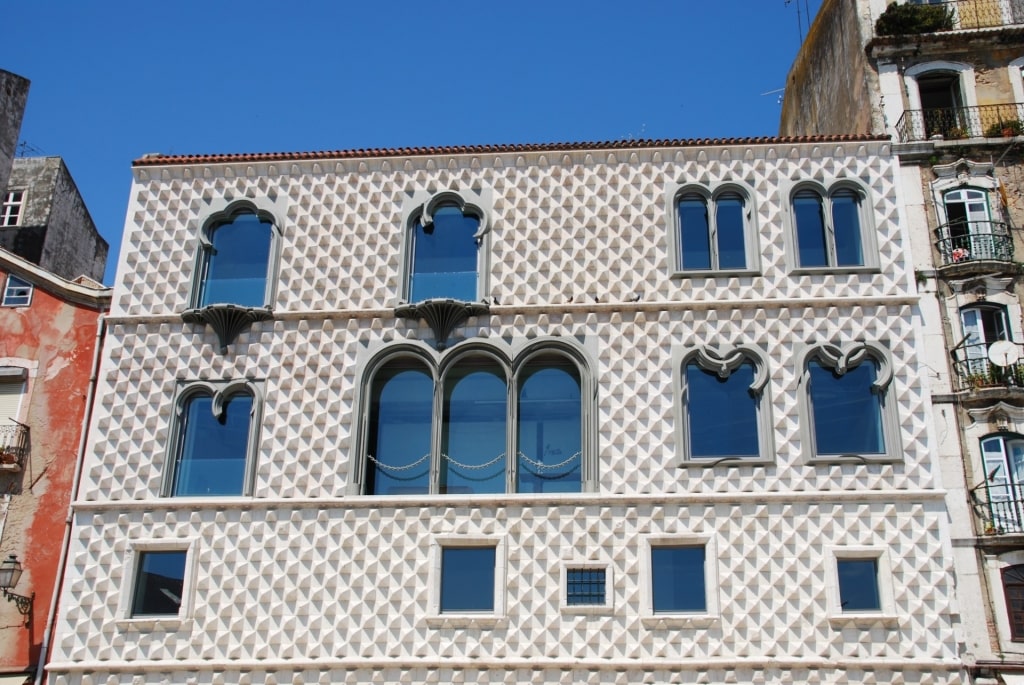
Casa dos Bicos
José Saramago is one of Portugal’s most prolific writers; he was awarded the Nobel Prize in Literature in 1988. Saramago’s varied works include Journey to Portugal, a personal tale of traversing his home country and an excellent pre-Portugal read.
Near Alfama’s riverside, the diamond-studded facade of Casa dos Bicos holds a trove of his original works inside the author’s foundation.
While the collection will mainly tempt literature pilgrims, the archeological discoveries on the ground floor of this 16th-century building, including Roman walls, are open to all.
Admire Azulejos

Museu Nacional do Azulejo Photo by Julien Chatelain on Flickr, licensed under CC BY-SA 2.0
You’ll spot azulejos, hand-decorated, tin-glazed tiles, all across the Alfama district. This Islamic-inspired art style dates back to the 15th-century Moorish ruling period and now embellishes everything from simple street signs to sacred cloisters.
To see some of the oldest, you’ll need to transit a few neighborhoods farther to the Museu Nacional do Azulejo, one of the best places to visit in Portugal. However, there are some fantastic local examples.
Follow your map to the fading blue and white azulejos at Largo das Alcaçarias, once the site of a Roman bathhouse, or pause to admire the azulejos around Miradouro de Santa Luzia. The view from the balcony might steal all the attention, but the modern tile canvas behind the fountain pool has a wonderful hand-painted panorama.
Shop for Typical Souvenirs
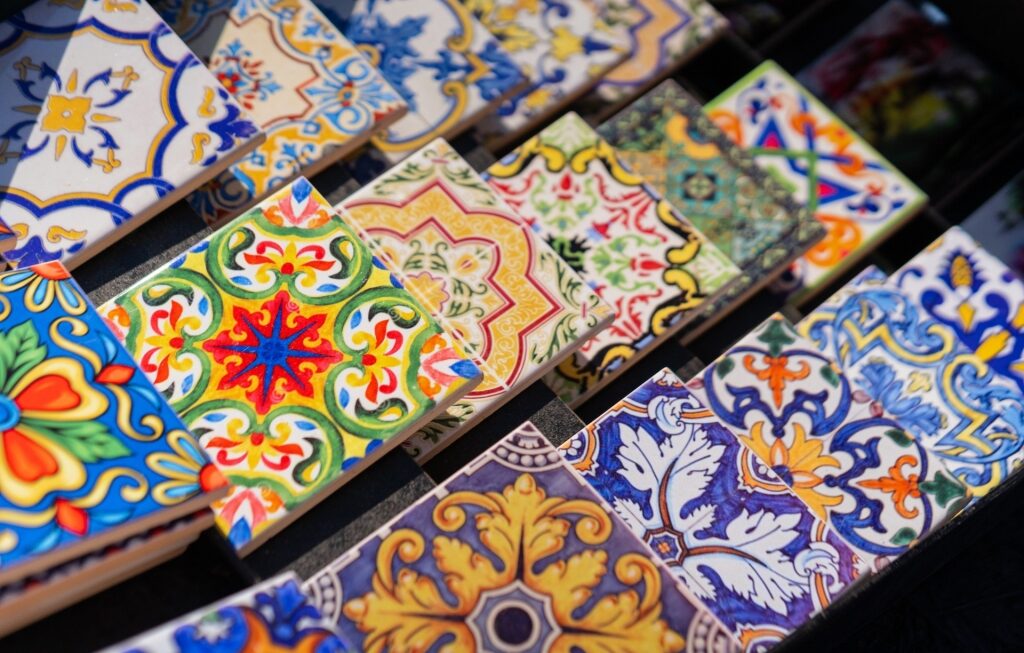
Azulejo tiles
Shopping in Lisbon, particularly in the city’s most touristy neighborhood, requires a little patience to find authentic products. Many stores in Alfama sell mass-produced ceramics—check the reverse for an artist’s stamp—but some local crafts are worth seeking out.
Family-run ByNunes has been creating beautiful ceramics by hand in Lisbon for nearly half a century. With a handful of stores in and around Alfama, their outlets are an excellent choice for hand-painted azulejos and tableware.
Ceramic swallows, or andorinhas locally, are gifted to symbolize a sense of longing for home, making them an excellent reminder of Lisbon for your walls.
Another typical Alfama souvenir, especially given the neighborhood’s obsession with sardines, is conservas, tinned fish. There are a few flashy outlets, but head to low-key Conserveira de Lisboa, a century-old expert in oil-soaked sealed sardines, for some tailored recommendations.
Best Restaurants in the Alfama District
Casa São Miguel

Pastel de nata
Behind the mint green doorway of this pocket-sized pastelaria (pastry shop), you’ll find the perfect place to pause for a bica (espresso) and a typical Portuguese pastry.
But before automatically ordering a pastel de nata, Lisbon’s famous egg custard tarts, peek into the cabinet of tempting sweet treats representing traditional recipes from Portugal’s other regions.
O Cartaxeiro
Set on the corner of Largo do Chafariz, the square’s fountain splashing in the background, O Cartaxeiro’s small cluster of checkered tables is ideal for a people-watching lunch.

Arroz de pato
The menu is simple and traditional, often quickly updated with hand-scrawled pratos do dia (dishes of the day). To try their perfectly seasoned arroz de pato (duck rice), you must plan an early lunch, as this beloved recipe regularly sells out.
Chapitô à Mesa
Settle into a window table for sensational Lisbon views at Chapitô, one of the Alfama district’s more unique restaurants, part of a cultural space and circus training school.
Whether you opt for the breezy dining room’s views or sit in the shade of the courtyards’ colorful fabrics, listening to performers practicing, the dishes won’t disappoint. The menu offers modern twists on typical recipes, such as bacalhau confit (codfish) and Iberian black pork with banana chutney.
Sardinha
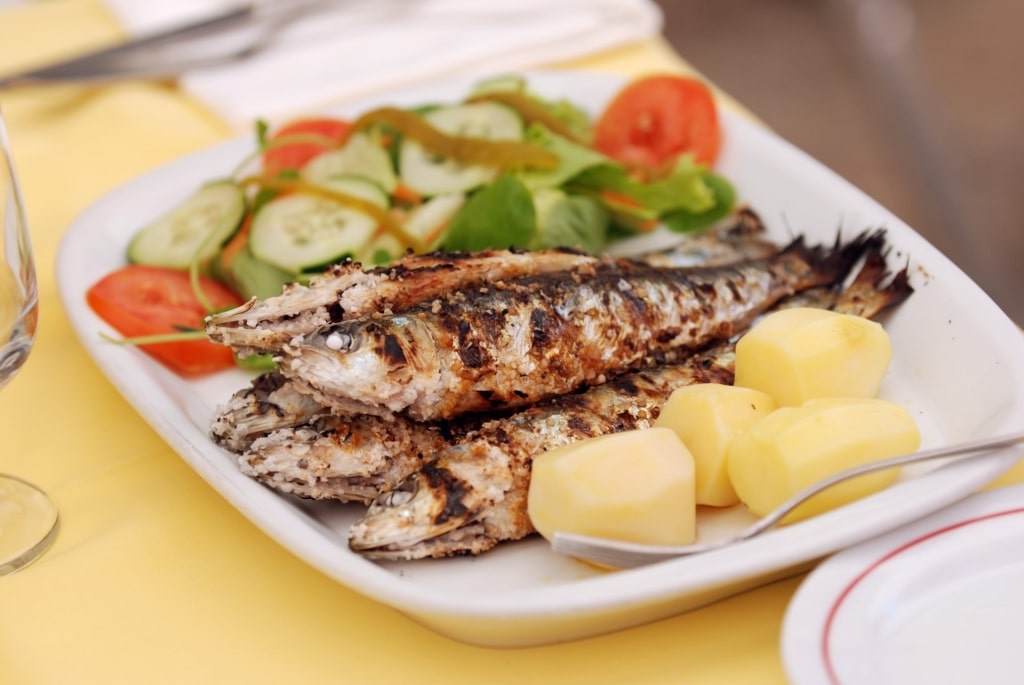
Grilled sardines
Easily overlooked, this cubby hole of a restaurant on Alfama’s edge embodies the neighborhood. Serving its titular grilled sardines, hearty vegetable soups, and house wines in terracotta jugs, Sardinha’s typically local menu is unfussy but delicious.
You’ll want to arrive early to snag a table. Only around a dozen are squeezed into the no-frills dining room. But it’s worth it for one of Lisbon’s most humble and homely dining experiences.
Read: What to Eat in Lisbon
Travel Tips
Getting to Alfama
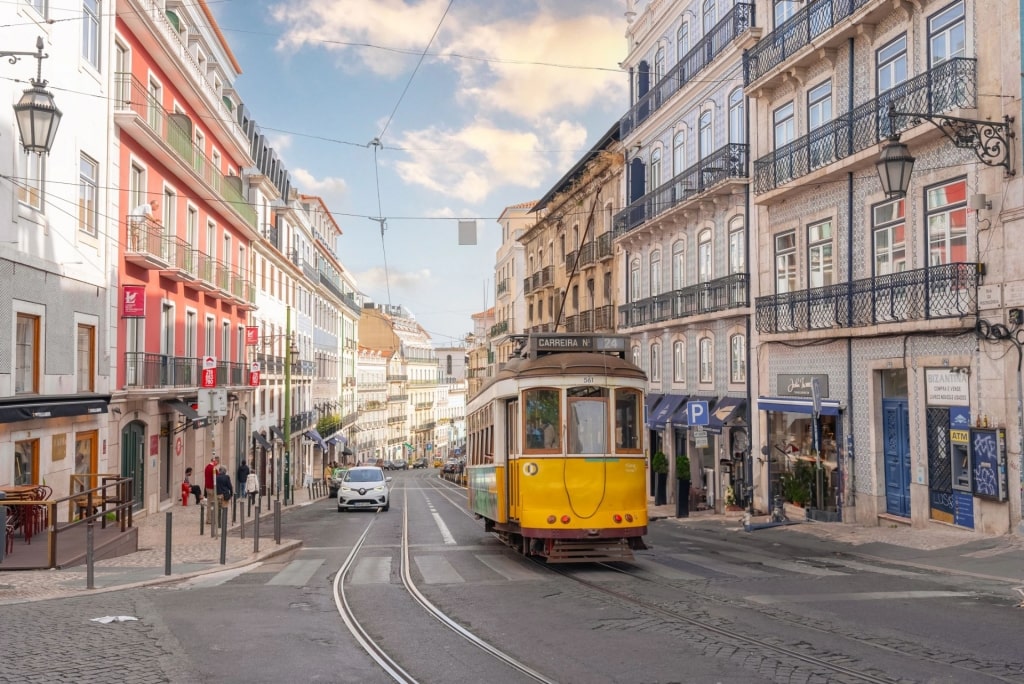
Lisbon tram
Bordering downtown Lisbon (called Baixa), Alfama is quickly reached on foot from the city’s most central landmark, Praça do Comércio. It’s a bit of an ascent up from the riverside to São Jorge Castle, but it’s a beautiful one.
Still, you could take one of Lisbon’s famous sunflower-yellow trams up and wander back down on foot. Tuk Tuks provide guided tours and transfers to less accessible streets.
Best Time to Visit
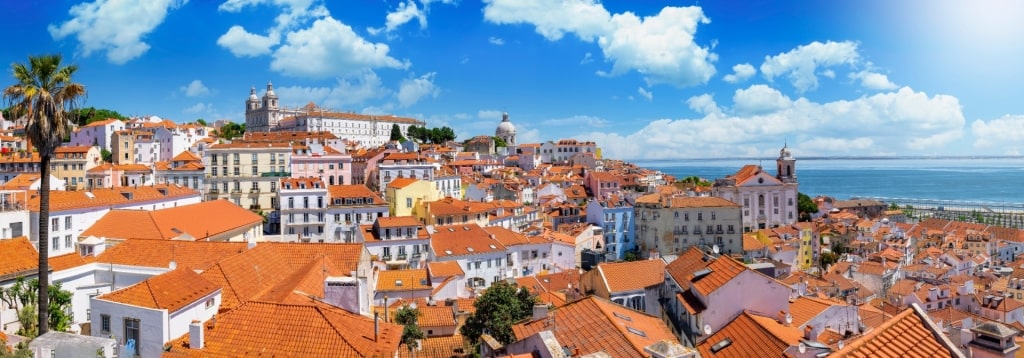
Alfama
While there isn’t a bad time to visit Alfama, April through November is one of the best times to visit Lisbon as the weather is most reliable, with near-guaranteed blue skies and longer days thanks to daylight savings.
July and August can be particularly warm, but being a stone’s throw from the coast ensures a cooling breeze. Unlike some European countries, it’s not as common for everyone to take holidays in August, meaning attractions and experiences remain open.
What to Pack

Alfama
You’ll want to pack your comfiest walking shoes to explore Alfama. Lisbon’s oldest neighborhood is a web of roughly cobbled streets and steep inclines best explored on foot.
Don’t forget sunscreen, lightweight daytime clothes, and layers to add in the late afternoon, especially if you have at least three days in Lisbon. The Atlantic breeze can usually be felt after sunset.
Currency & Tipping
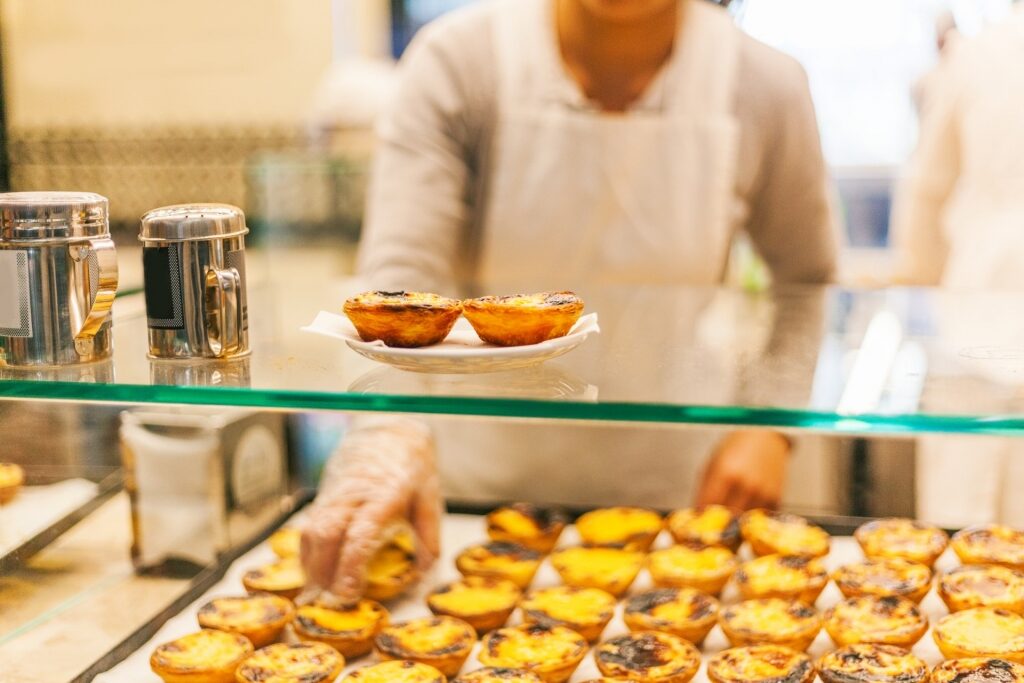
Shop in Lisbon
The currency in Portugal is the euro (EUR). While card use has become more prevalent in recent years, it’s far from universal. Some establishments only accept Portuguese bank cards, usually denoted by the MB sign, while others, mainly small, family-run businesses, can be cash only. It’s always best to check before eating, especially as most ATMs in and around Alfama are tourist-focused with higher fees.
When tipping, rounding up for small purchases, or adding a few euros on top is common. For a sit-down meal with great service, 10% is always appreciated.
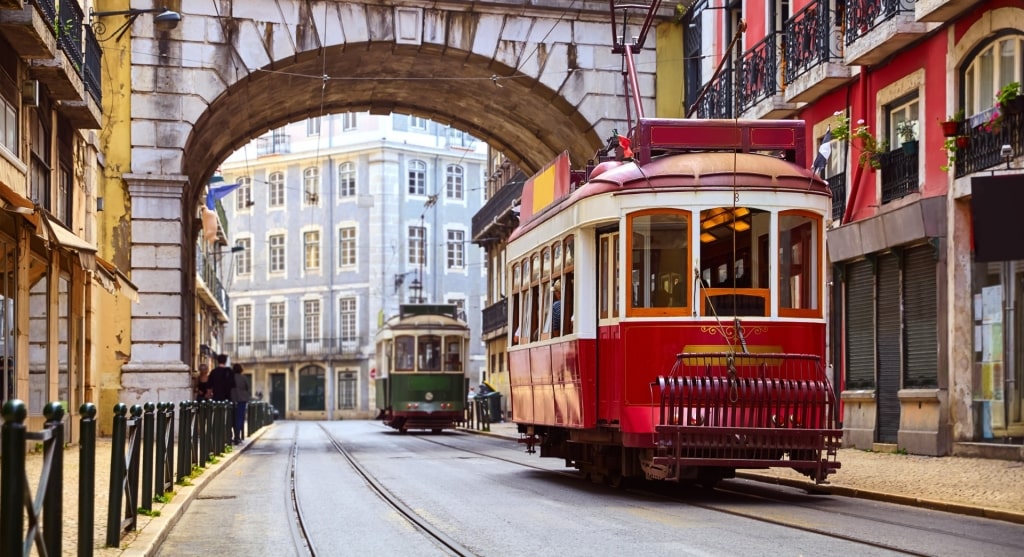
Alfama
Eager to explore the Alfama district’s historic streets, snack on grilled sardines and be serenaded by fado? Browse Celebrity’s Lisbon cruises to start planning your vacation.
